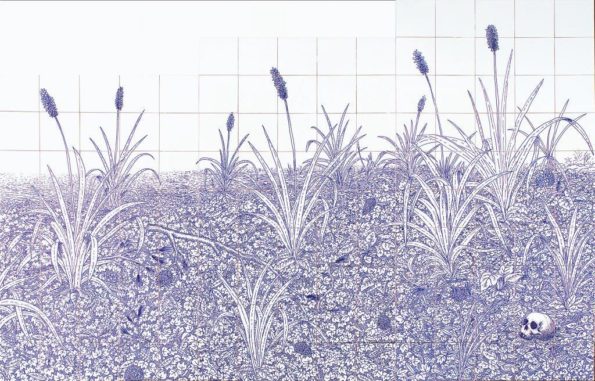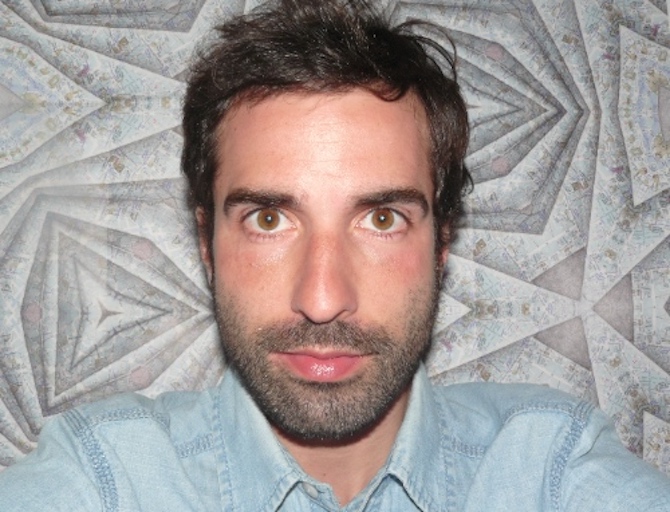Search
To search for an exact match, type the word or phrase you want in quotation marks.
A*DESK has been offering since 2002 contents about criticism and contemporary art. A*DESK has become consolidated thanks to all those who have believed in the project, all those who have followed us, debating, participating and collaborating. Many people have collaborated with A*DESK, and continue to do so. Their efforts, knowledge and belief in the project are what make it grow internationally. At A*DESK we have also generated work for over one hundred professionals in culture, from small collaborations with reviews and classes, to more prolonged and intense collaborations.
At A*DESK we believe in the need for free and universal access to culture and knowledge. We want to carry on being independent, remaining open to more ideas and opinions. If you believe in A*DESK, we need your backing to be able to continue. You can now participate in the project by supporting it. You can choose how much you want to contribute to the project.
You can decide how much you want to bring to the project.

The artist Jorge Fin goes to the mountain to honour life in the countryside through drawings on tiles inspired in Walden by Thoreau. The exhibition in Palacio Almudí in Murcia is as simple as the premise that he defends. Drawings on tiles with texts from the escapist book of the dad of the civil disobedience.
Thoreau left the family work in a pencil factory in Concord to live austerely in the nature and to write a diary about his experience. “Walden, or, Life in the Woods”, published in 1854, summarises in words the two years, two months and two days that he lived in Walden Pond. Jorge Fin left his career in a bank in London in 1988, to settle in the vegetable garden in Molina de Segura, in Murcia. There he lived simply, surrounded by nature, and dedicated to paintings and contemplation. Now, thirty years later, and after the reading of the diary/manual of Thoreau, summarises his experience in “Walden, Manual para echarse al monte”, a translation to Spanish from Murcia of the lesson of the American, through such a direct connexion that seemed that Jorge Fin drew with Thoreau’s pencils, although they acutally were Hi-Text blue permanent markers.
The group of tiles, the majority of which were profusely drawn, illustrate different chapters of Walden, in some cases, in such as literary and literal way (for example, the one that mentions the quote “I had three chairs in my house; for solitude, for friendship, for society”, shows three empty chairs in the woods). Landscapes, populated with insects or birds, cloudy and wooded, that in effect seem more an area of Massachusetts than the plain of the Spanish south east, are replicated. But we are in front of an exercise that aggravates imagination, liked to the praise of idleness (name of an essay written by Bertrand Russell in 1932), even when in the majority of the scenes there is movement (plants arched by the wind, groups of clouds in advanced, ants in motion). Within the technical limitations that the drawing with markers on tiles has, the artists manages to go further in perspective and three-dimension the ensemble on the surfaces of 15×15 centimetres.
Several tributes to art history can be seen in some of the works. One of them, in which there is a farmer resting on top of a pile of ears, is in the drawing “Non-Rest from Work (after Millet)” (1889-1890) by Vincent Van Gogh. The text that goes with it belongs to chapter 8 of “Walden”; “XX”. Perhaps we could read this suggestion in the current way; the nap of the farmer from Murcia, unemployed after the economic crisis, and that when he wakes up he has a forced readjustment waiting for him. We cannot forget that who grabs the marker –on a handmade pottery, not industrial- is a retrained banker. In another work the influence of Durero is visible, like in the wild field on which a skull rests, and the quote of which says “Ours skulls are not probably distinguished from our ancestors”. Once again we can understand this relation image-text as an allegory of the demand of the field labour that it is inherited from generation to generation, forcing the health of the day labourer until death. Thoreau was not a hooligan of capitalism –although he was not a socialist either- and he affirmed that the price of things should be calculated according to the quantity of life that we sacrificed for it [1]. The search of an equilibrium between needs and requirements, and that can lead to the reconsideration of living in a big city or the pride of the workaholic.
Supposed intentions multiplied as the water waves that in another of his tile collections form a painted haiku. “Circular waves, in lines of beauty” on tiles, material destined to protect the domestic space, or to decorate the sumptuous place, as a palace of Spanish East.
The presence of clouds is not new for this artist, member 0027 of the “Cloud Appreciation Society”, and official painter of cloudscapes since decades ago. Clouds trading higher on a stock market different than the one of the City of London. Jorge Fin, artists who not only looks up, but also forward (he had the idea of the Mediterranean Iceberg Association, a presumed group of spotters of icebergs in the Mediterranean, to those whom I presuppose endowed with great patience) and down; to ants, frogs, plants and prints and that dedicates his time to create requests that make us lose –or win- the time with the sighting of his works and after the contemplation, perhaps obtain some ideas from this manual to go to the mountain.
[1] Theory that, among others, the official biographer of Thoreau, in Richardson, R. B., defends (2017). Thoreau: Biografía de un pensador salvaje. Madrid: Errata naturae.

His intention is to continue to improve his writing of art criticism; everything else is enjoying and learning from contemporary proposals, establishing other strategies of relations, either as a contributor to magazines, editor of a review, curator or lecturer. As a backpacking art critic, he has shared moments with artists from Central America, Mexico and Chile. And the list will continue. Combating self-interested art, applauding interesting art.
"A desk is a dangerous place from which to watch the world" (John Le Carré)